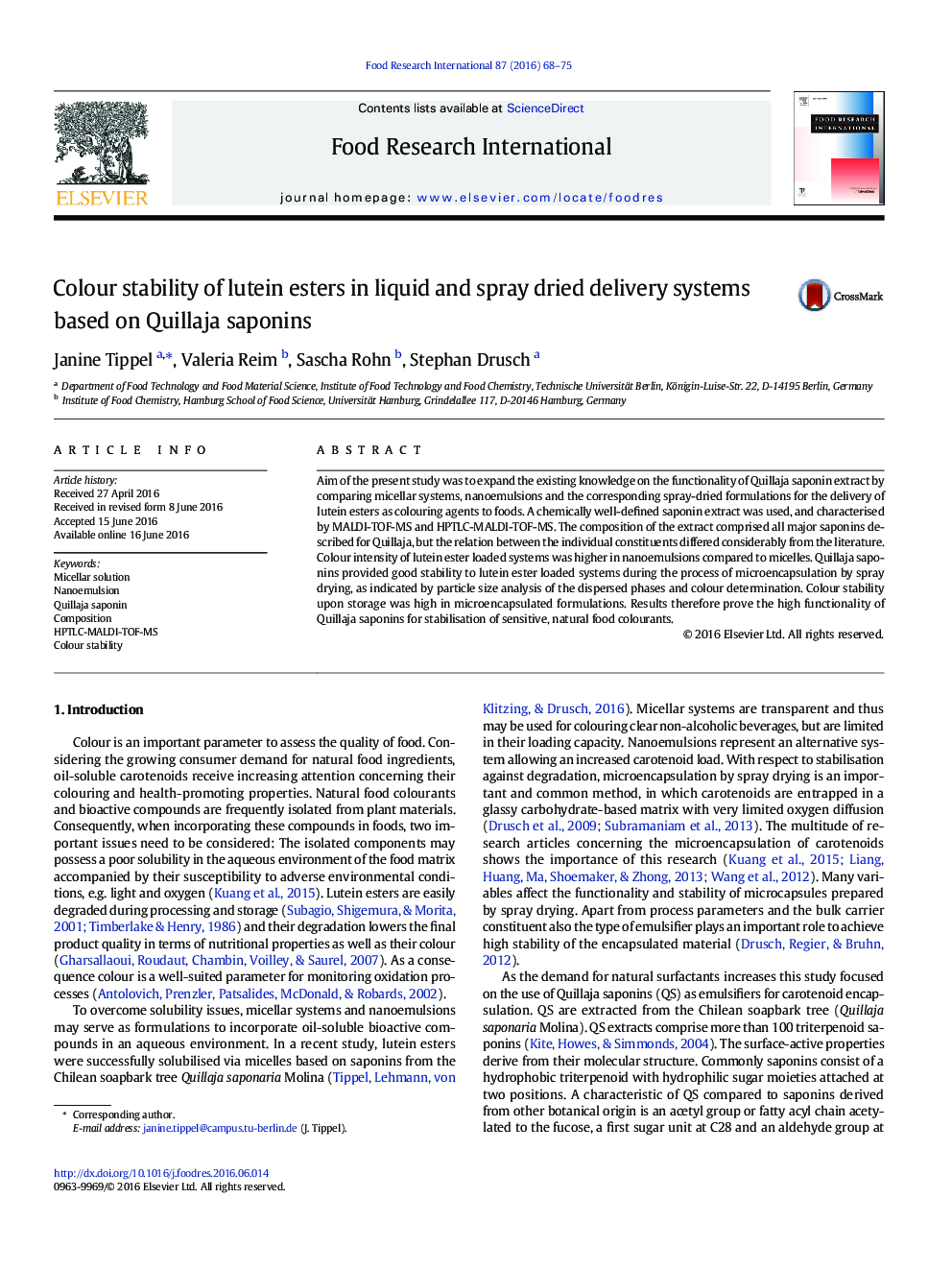| Article ID | Journal | Published Year | Pages | File Type |
|---|---|---|---|---|
| 4561201 | Food Research International | 2016 | 8 Pages |
•Saponin extract may be characterised by MALDI-TOF-MS or HPTLC-MALDI-TOF-MS.•A higher lutein ester load was achieved in nanoemulsions versus micellar solutions.•The aqueous systems are stable during the process of atomisation and dehydration.•Colour stability is increased in spray-dried delivery systems.
Aim of the present study was to expand the existing knowledge on the functionality of Quillaja saponin extract by comparing micellar systems, nanoemulsions and the corresponding spray-dried formulations for the delivery of lutein esters as colouring agents to foods. A chemically well-defined saponin extract was used, and characterised by MALDI-TOF-MS and HPTLC-MALDI-TOF-MS. The composition of the extract comprised all major saponins described for Quillaja, but the relation between the individual constituents differed considerably from the literature. Colour intensity of lutein ester loaded systems was higher in nanoemulsions compared to micelles. Quillaja saponins provided good stability to lutein ester loaded systems during the process of microencapsulation by spray drying, as indicated by particle size analysis of the dispersed phases and colour determination. Colour stability upon storage was high in microencapsulated formulations. Results therefore prove the high functionality of Quillaja saponins for stabilisation of sensitive, natural food colourants.
Graphical abstractFigure optionsDownload full-size imageDownload as PowerPoint slide
